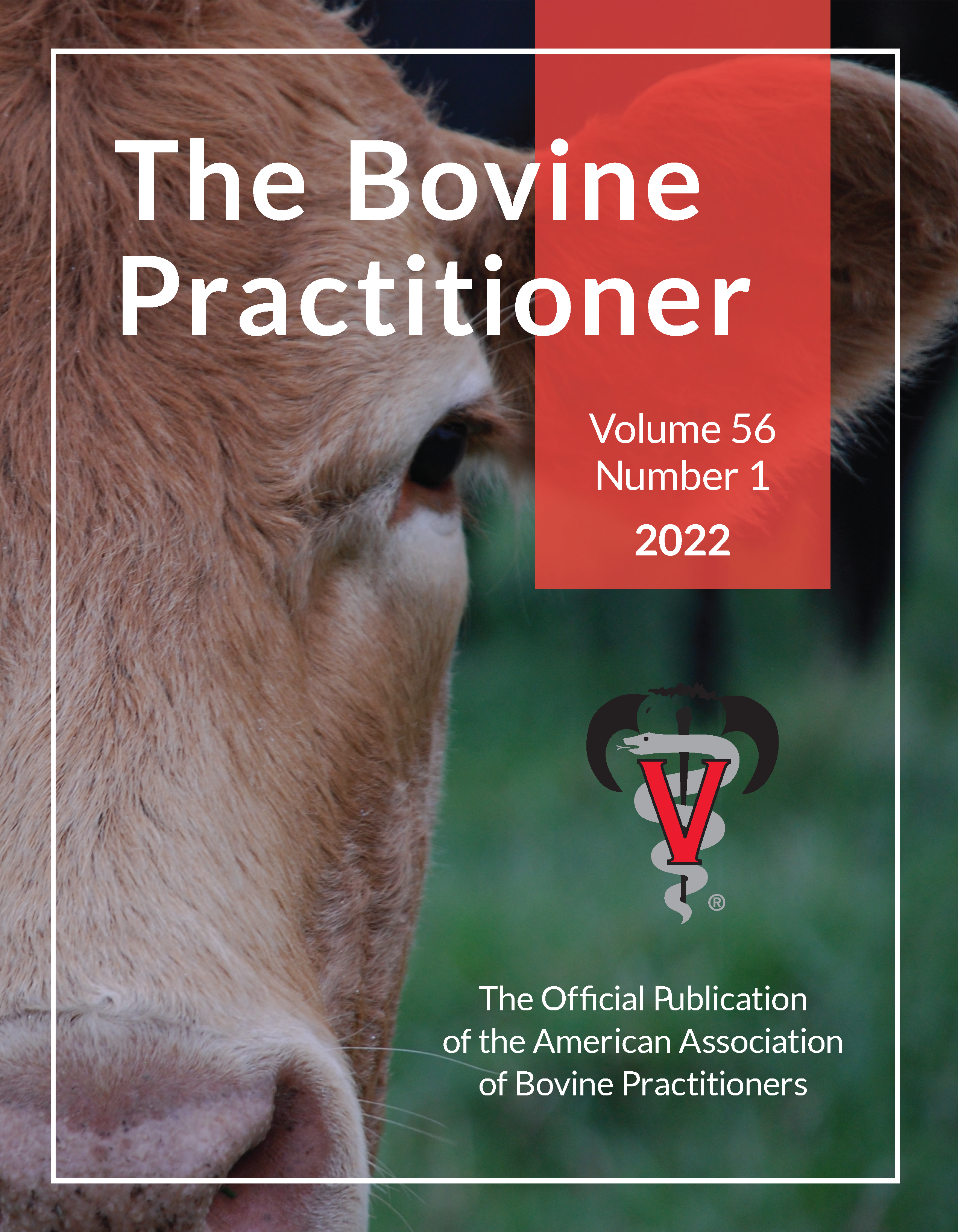Association of feedlot disease treatments on the probability of heart disease syndrome in U.S. feedlot cattle
DOI:
https://doi.org/10.21423/bovine-vol56no1p1-13Keywords:
BRD, complex disease, feedlot, heart diseaseAbstract
Data from 14 U.S. feedlots from January 1, 2017, through December 31, 2020, were evaluated for disease treatment on the probability of being terminally diagnosed with heart disease (HD). The study objective was two-fold: 1) determine the association between the number of bovine respiratory disease (BRD) treatments (0,1,2,3+) and HD, and 2) determine the association of common feedlot disease treatment (AIP, BRD, Complex Disease, GI+Bloat, Other), and cohort demographics with HD. Data were analyzed using generalized mixed-effects models to evaluate the probability of terminal HD. Covariates of interest include: BRD treatments, feedlot disease category, average cohort arrival weight, arrival year, arrival quarter, feedlot elevation and sex. The number of BRD treatments was associated with HD (P < 0.01). Cattle requiring additional BRD treatments increased their probability of not finishing the feeding period due to HD. The magnitude of this association was influenced by average cohort arrival weight, feedlot elevation, sex and arrival quarter (P < 0.01). Feedlot disease categories were associated with the probability of not finishing the feeding phase due to a HD diagnosis (P < 0.01). The magnitude of this association was influenced by average cohort arrival weight, and feedlot elevation (P < 0.01). Sex was influenced by feedlot elevation on the probability of not finishing due to HD diagnosis (P < 0.01) with higher elevations having a greater probability of HD. The majority of HD cattle were railed prior to death at the feedlot (9 of the 15 per 10,000 cattle received).






